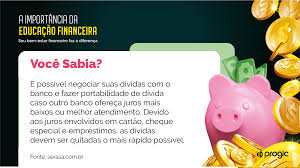(And How to Protect Yourself From It)
Imagine this: you’re browsing a product online and see a bright red alert—“Only 2 left in stock!” Suddenly, you feel your heart rate rise, your finger hovers over the “Buy Now” button, and in seconds, you’ve made a purchase you weren’t planning.
This isn’t a coincidence. It’s not even really about the product. It’s about your brain — and how marketers know exactly how to press your buttons using the fear of scarcity.
Let’s explore how this powerful tactic works, how it triggers anxiety, and most importantly, how you can take back control of your buying decisions.
The Psychology Behind Scarcity Marketing
Scarcity is one of the most powerful psychological triggers used in advertising. It’s based on a simple principle: people want more of what they feel they might lose. This concept is deeply rooted in human survival instincts. In the past, limited resources meant real danger. In today’s world, that fear has been hijacked and adapted for profit.
Marketing experts don’t just sell you products. They sell you urgency. They make you believe that if you don’t act now, you’ll miss something valuable. That belief triggers a primal emotional response, often overriding logic, planning, and even your financial limits.
Scarcity Triggers Emotional Spending
When scarcity appears in marketing, it tends to provoke the same internal dialogue:
“What if it’s gone tomorrow?”
“Everyone else is getting it — I’ll miss out.”
“This must be special if it’s running out.”
These thoughts tap into FOMO (Fear of Missing Out), which is not just a buzzword — it’s a real psychological phenomenon. Scarcity creates anxiety, and anxiety clouds rational thinking. This is especially dangerous for people already facing economic anxiety, who may be vulnerable to emotional spending as a form of relief or validation.
In other words, scarcity isn’t just a tactic — it’s emotional manipulation.
Common Scarcity Tactics You’ve Probably Seen
Marketing teams have fine-tuned these strategies to feel subtle — but they’re anything but innocent. Some of the most common tactics include:
• “Only 3 left in stock”
• “Limited-time offer – ends in 2 hours”
• “More than 500 people are looking at this right now”
• “Last chance!”
• Countdown timers on checkout pages
• Early access / VIP-only offers
These aren’t warnings. They’re pressure. And they’re designed to make you act out of fear, not intention.
Step-by-Step: How to Defend Yourself Against Scarcity Triggers
1. Recognize the Manipulation
The first step is awareness. When you see phrases like “only a few left” or “flash sale,” pause. Ask yourself: Is this urgency real — or manufactured to rush me?
Recognizing the tactic breaks its power.
2. Reconnect With Your Actual Needs
Before making a purchase, ask yourself:
• Do I need this right now?
• Would I still want it if it wasn’t “almost gone”?
• Am I feeling pressured — or excited — to buy?
Write these questions down and keep them visible when you shop online. Pausing for just 60 seconds can stop a scarcity-driven purchase in its tracks.
3. Use the “Shopping Cooldown” Rule
Create your own cooling-off period. For smaller purchases, give yourself 30 minutes. For larger ones, wait 24 to 48 hours. This forces your logical brain to re-engage after the emotional spike.
You might still want the item — but now you’ll be choosing consciously, not reactively.
4. Unsubscribe and Detox
Scarcity thrives in your inbox and social feed. Limit your exposure:
• Unsubscribe from marketing emails with emotional language
• Mute or unfollow influencers who constantly use countdowns, urgency, or guilt-driven sales
• Disable one-click buying options to add intentional friction
What you consume digitally impacts what you consume financially.
5. Set Emotional Spending Boundaries
Build a simple rule: No buying when emotionally triggered. That means when you’re sad, bored, lonely, or anxious — step away from your phone or computer.
Instead, build a “calm list” — a short list of things you can do to regulate emotions before making a decision. Examples:
• Go for a walk
• Listen to calming music
• Journal what you’re feeling
• Call someone you trust
Your emotions deserve care — not commerce.
Why This Matters So Much More Today
After the global financial stress of COVID-19, many people are still recovering emotionally — not just economically. Scarcity marketing can feel even more intense in this landscape. When resources feel tight, we become more sensitive to loss — and therefore, more likely to react to perceived scarcity.
Marketers know this. They design campaigns not just to sell, but to tap into your fear that you’re falling behind.
That’s why protecting your mindset is more than a money-saving tip. It’s emotional self-defense.
What You Really Deserve Can’t Be Sold
You don’t need to rush. You don’t need to prove your worth through what you buy. And you certainly don’t need to fear missing out on a product when what you truly need is peace, presence, and purpose.
Scarcity will keep showing up on screens. But you get to choose whether it enters your decisions — or stops at your awareness.
The next time you see “Only 2 left in stock,” take a breath and remember:
What’s for you won’t require panic.
What matters most is rarely in short supply.
And the things that truly enrich your life are never things you need to race to secure — because they come from within.
































